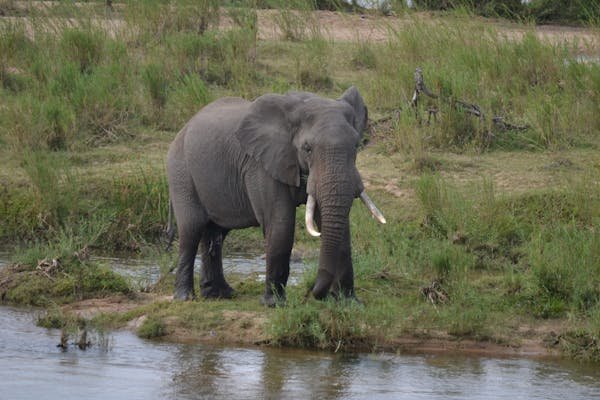
Planning a trip to the wild plains of Tanzania? Whether you’re dreaming of witnessing the Great Migration or spotting the Big Five, knowing the best time to visit Tanzania for safari can make all the difference. With its diverse wildlife and vast landscapes, Tanzania offers exceptional safari experiences all year round—but certain months offer better visibility, easier travel, and unique wildlife events.
Tanzania’s Safari Seasons: An Overview
Tanzania has two main safari seasons:
-
Dry Season (June to October) – Best for wildlife viewing
-
Wet Season (November to May) – Lush landscapes and fewer tourists
Understanding the differences between these seasons helps you choose when to go based on your interests, travel style, and budget.
June to October: Peak Safari Season
This is widely considered the best time to visit Tanzania for safari. The dry season creates ideal conditions for game viewing.
-
Weather: Cool and dry
-
Visibility: Animals gather around waterholes, making them easy to spot
-
Parks to Visit: Serengeti, Ngorongoro Crater, Tarangire, and Ruaha
-
Highlights:
-
Great Migration (July–September) in the northern Serengeti
-
River crossings at the Mara River
-
High chances of spotting predators
-
Why it’s the best: You’ll see large concentrations of animals in open plains with little vegetation. However, this is also the most expensive and busiest time to visit.
November to December: Short Rains
This is the start of the green season, with light rain showers that usually occur in the afternoon.
-
Weather: Warm with occasional rain
-
Parks to Visit: Serengeti, Lake Manyara, and Tarangire
-
Highlights:
-
Calving season begins in the southern Serengeti
-
Fewer tourists and lower prices
-
Lush scenery and blooming landscapes
-
Why visit now: Great for photographers and travelers seeking a quieter, more intimate safari experience. Wildlife is still abundant, and the parks are less crowded.
January to March: Calving Season
This is a spectacular time to witness new life in the wild, especially in the southern Serengeti region.
-
Weather: Warm and mostly dry
-
Parks to Visit: Ndutu Plains, Serengeti, Ngorongoro
-
Highlights:
-
Thousands of wildebeest calves born daily
-
High predator activity (lions, hyenas, cheetahs)
-
Bird watching is excellent
-
Why it’s special: If you’re interested in nature at its rawest—birth, survival, and predator-prey dynamics—this is one of the best times to go.
April to May: Long Rains (Low Season)
This period experiences heavier rainfall and is considered the low season for safaris.
-
Weather: Wet and humid
-
Parks to Visit: Limited access to some areas due to muddy roads
-
Highlights:
-
Lowest travel costs and accommodation rates
-
Fewer tourists
-
Beautiful green landscapes and dramatic skies
-
Why still go: If you’re on a tight budget and don’t mind some rain, this could be a peaceful and rewarding time to explore Tanzania’s beauty with fewer crowds.
Month-by-Month Safari Highlights
| Month | Highlights |
|---|---|
| January | Calving begins, predator action in Serengeti |
| February | Peak of calving season |
| March | End of calving, start of rainy season |
| April | Lush greenery, fewer crowds, rains start |
| May | Heavy rains, off-season deals |
| June | Start of dry season, wildlife becomes visible again |
| July | Great Migration river crossings |
| August | Peak of dry season, best Big Five sightings |
| September | Continued migration activity |
| October | Dry, great game viewing across all parks |
| November | Short rains begin, greener scenery |
| December | Calving begins, great for photography |
Tips for Planning Your Safari
-
Book Early in Peak Season: Lodges fill up quickly between June and October.
-
Pack Wisely: Lightweight clothing, a hat, sunscreen, insect repellent, and binoculars are a must.
-
Stay Flexible: Weather and wildlife sightings can be unpredictable. A good guide makes all the difference.
-
Choose the Right Park: Serengeti for migration, Ngorongoro for scenery, Tarangire for elephants, and Selous or Ruaha for fewer tourists.
Final Thoughts
The best time to visit Tanzania for safari really depends on what kind of experience you’re seeking. For unbeatable game viewing and the Great Migration, stick to the dry months of June to October. If you’re a photographer or wildlife enthusiast interested in rare moments like calving or predator action, January to March is ideal. And if you’re traveling on a budget, the shoulder seasons still offer rewarding, quieter safaris.
No matter when you go, Tanzania’s vast beauty, incredible wildlife, and warm hospitality will leave you with memories to last a lifetime.

